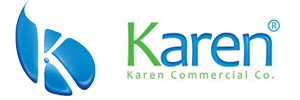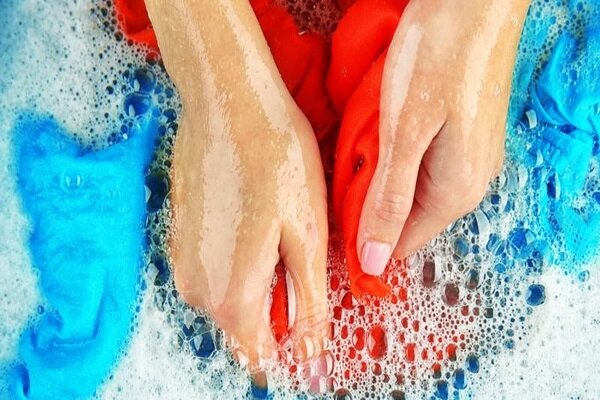The purpose of each detergent product is detergent, and to provide this feature, it must contain some chemicals called surfactants or surfactants to give both the detergent and detergent properties to the product.
According to Mehr News Agency, the purpose of any detergent product is to clean it, and to provide this feature, these products must contain some chemicals called surfactants or surfactants to give both the detergent and detergent properties to the product. Surfactants such as Texapen and sulfonic acid, due to their special molecular structure, can dissolve fats and remove contaminants and grease from the washing environment. Various surfactants are produced in the world and are used in a variety of detergent products. If you read the label or label of a dishwashing liquid or shampoo, you will see that some of the ingredients in these labels are present in most detergent products.
Sodium lauryl ether sulfate, for example, known as Texapen, is a widely used surfactant used in most shampoo formulations, dishwashing liquid, dishwashing liquid, and more. Another case is alkyl benzene sulfonic acid, which is known in the chemical market as sulfonic acid. These two materials are among the most widely used materials used in various formulations in detergent industries. You may have used at least one of these in any detergent available to you. In this article, we want to examine the properties and characteristics of these two surfactants.
What is Texapon?
Texapen or sodium lauryl ether sulfate is an anionic surfactant based on 12 and 14 carbon fat alcohols. This fatty alcohol, which is mainly produced in Malaysia with plant origin, is autoclaved at Shazand Petrochemical after entering Iran. Autoxillation increases the stability of the floor and improves its compatibility with the skin. After autoclaving the fatty alcohol, the alcohol enters the sulfonation plants, a handful of which are available domestically.
This alcohol reacts with sulfur trioxide gas during the sulfation process and, after being neutralized with sodium hydroxide, is converted to sodium lauryl ether sulfate, texapen, or texapone. Depending on how much water it contains, Texapen is available in 70% and 30%, respectively. Of course, Texapen cannot be made in any concentration. Texapon, for example, hardens at concentrations between 30 and 70 percent. Texapen, on the other hand, is 70% pasty, and tegrapen is 30% viscous and can be easily used.
Texapen is a light white or yellow pasty substance that has good foaming and cleansing properties. Texapen is used in a wide range of detergents such as shampoos, toilet liquids, dishwashing liquids and more. One of the features of Texapen is its high foaming properties. Other features of Texapen include its very strong washing properties, emulsifying, viscosity, and foam stability.
Note that sodium lauryl ether sulfate should not be confused with sodium lauryl sulfate, also called SLS. One of the advantages of Texapen over SLS is its number of autoclaved moles, which reduces skin irritation, foaming stability and better product viscosity regulation. One of the most important features of Texapen is that in combination with loramide and betaine and sodium chloride salt, it gives viscosity and consistency to the product, while sulfonic acid does not have much viscosity.
Also, the price of tegrapen is much higher than the price of sulfonic acid. It should be noted that loramides and betaine are used in detergent products to increase the stability of the floor and create smaller floors that will improve washing performance. Loramide and betaine also have good emulsifying and purifying properties.
Another substance known in the Texapen category in Iran is Texapen shellfish. It is actually a combination of Texapen, water and other substances called ethylene glycol mono-stearate and glycol-di-stearate, which in special production conditions leads to the production of white and shell-shaped substances, which are usually used to create a more stylish and beautiful appearance in products such as shampoos and liquids. Detergent is used.
What is Sulfonic Acid?
Sulfonic acid or alkyl benzene Sulfonic acid is a type of anionic surfactant in the form of a brownish-viscous liquid that is produced and used in Iran with a purity of at least 96%. As the name implies, this substance is acidic and corrosive and must be stored in steel tanks. The raw material for sulfonic acid, alkyl benzene, is a line extracted from oil in Isfahan Petrochemical and Kermanshah Petrochemicals. Then linear alkyl benzene, such as Texapen, is sulfonated in sulfonation plants and converted to sulfonic acid.
The analysis of sulfonic acid produced by sulfonation plants differs from each other, and technicians are able to distinguish between these differences. However, it should be noted that the activity of all acids produced in these factories is at least 96%.
Among the old factories that produce sulfonic acid in Iran is Paxan factory, and Paxan and Texapen Paxan sulfonic acid are well-known in Iran.
Sulfonic acid has high washing and emulsifying power, which is compatible with other surfactants in the formula of detergent products. It is also the cheapest type of surfactant in the world and is used in laundry formulations as much as possible. For example, in the dishwashing liquid formula, sulfonic acid is about 8 to 18 percent usable


